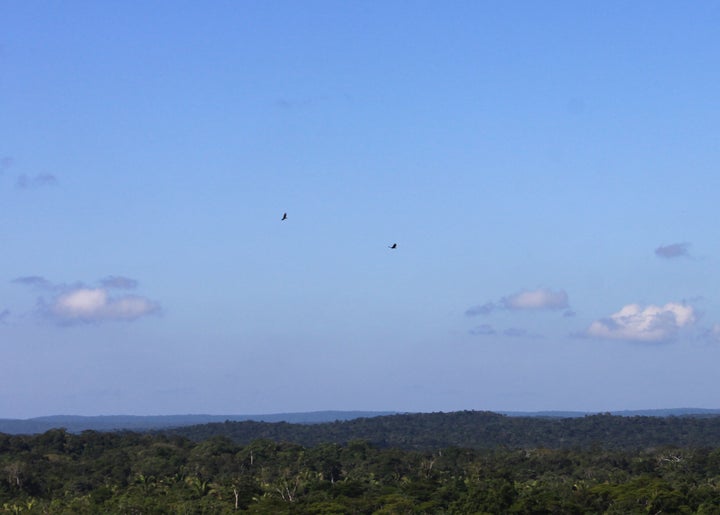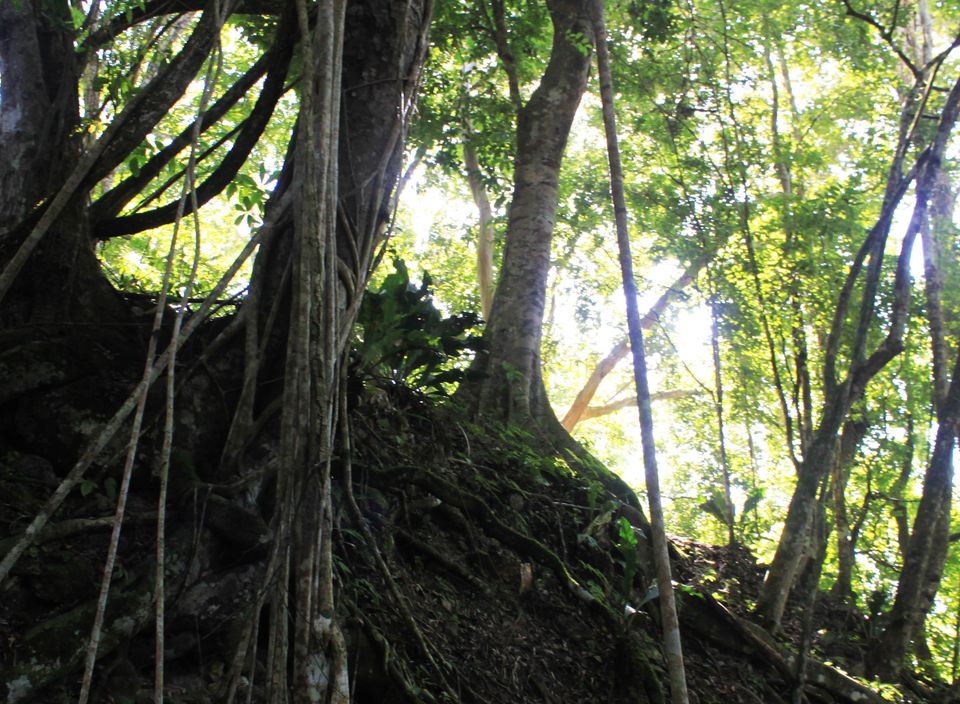
If you don't intend to get to El Pilar, you don't. The Maya site is separated from the highway by miles of ranches and teak plantations, not to mention a fair bit of forest. Even if someone were to wander up the road and onto the appropriate path, there is the off-chance that they might pass through the encroaching lianas and gumbo limbo trees without noticing the ruins peaking out from underneath the soil, which rises and falls in waves. This landscape is the counterpoint to the gleaming temples nearby, a humble place that raises fundamental questions about what exactly tourists in Belize, Guatemala and Mexico are seeing when they visit more popular Maya attractions.
"We need to be honest about the Maya and make sure people witness something with a level of veracity," said Dr. Anabel Ford, the University of Santa Barbara archeologist who discovered the ruins in 1983 and has maintained them amid what she calls a "forest garden" ever since. "I believe you can both show people something and have it be real. Besides, we have plenty of exposed temples already."
Though Dr. Ford is quick to say that El Pilar, on the Belize-Guatemala border, has been excavated -- the various tunnels into the mounds bear this out -- she is also plainly proud that the site hasn't been carved out of the forest like the stunning temples at nearby Caracol or Xinuntunich. She insists that leaving the ruins in a more natural state not only protects the basic limestone from the forest acids that stripped sculpted faces clean off the temples of Tikal but also gives visitors a more accurate account of what they might have looked like during Mayan times. Nothing at El Pilar has been reconstructed -- common practice elsewhere -- because such reconstruction relies on an unjustifiably absolute confidence in what Maya life was like.
Rather than being postcard pretty, the site has become Dr. Ford's answer to a question that has long confounded archeologists: How did the millions of Maya that once packed into this part of Central America manage to feed themselves?
"The Maya forest is a garden," explains Ford. "Ninety percent of the plants are useful as everything from spices to wood for construction to tanning material."
Dr. Ford's theory, a product of work with soil scientists, climate specialists and the Maya forest gardeners still living in this corner of Belize, is that rather than farming on a large scale like Europeans, Maya tended crops through long a cycle that included a stage of dense forest in order to vary their output. Over the millennia, this approach fundamentally changed the nature of the landscape, which was quite a bit less forested before the rise of the empire.
"People like to talk about how Native Americans were one with nature, but the reality is that nature was one with them," she explains.
Two Mayan phrases that have persisted to the modern day seem to indicate that the Maya had a different relationship with the natural landscape than the conquistadors. "Otochk'aax," meaning "The forest is my home," and "Kenan k'aax," meaning "Well-tended forest," reveal the native mindset. Tomas Lopez Medel, head of Spain's Yucatan government in the early 1500s, on the other hand, recorded his own order that the "the natives… construct houses close to one another… And they should not sow any milpas [cyclically changing forest gardens] within the town, but it shall be very clean."
There are two problems with Ford's vision of Mayan agriculture. Firstly, it is seen as radical and misguided by many Meso-American archeologists. Secondly, it isn't terribly awe inspiring.
Whether or not the Maya could have fed themselves from the forest remains a bone of contention among some archeologists. According to Sherry Gibs, an anthropologist and osteologist at Galen University, a Belizean college, the remains of Maya seem to indicate a largely maize-based diet.
"The land was probably covered with farms," says Gibbs. "Though there are foods from the forest, it seems unlikely it could have fed that many people."
The vision of Maya life Gibbs envisions -- and Ford is quick to concede most Maya specialist seem to favor this idea -- features huge swathes of fields punctuated occasionally by untamed forests and imposing temple structures. This is rather neatly in line with the popular depictions of the Maya that boost the economy here. But if El Pilar might disappoint a traveler intent on seeing the postcard wonders of Chichen Itza or Teotihuacan, it would also provide a singular palate cleanser for those who have seen other more exposed sites.
The path meandering through the site pauses at lookouts offering panoramic views of the tropical lowland forest, which is ceaselessly circled by condors. Within the courtyards, where trees stand far enough apart to approximate an orchard, light shines through in beams and glints off rocks that may or may not be part of the ruins. The line between incidental and historical is blurred here by roots and dirt.
El Pilar is also a lonely place, meditative thanks to the complete lack of crowds. In San Ignacio, tourists either book tours to ritual caves or wait patiently for their Tikal trip with "Juice," the Cicero of local guides. Asked how many people visit the site a day, the man selling tickets quickly estimated: "One point something," he said. "I don't think we got 400 people last year."
What travelers are missing is the chance to visit the mystery of the Maya as well as their ruins. The truth is that much remains unknown about the periods during which the Maya prospered and that uncertainty is poorly represented by the absolutism of grand edifices. By declining to expose its temples, Dr. Ford has made El Pilar into apt metaphor for the whole region: The truth remains buried.
